
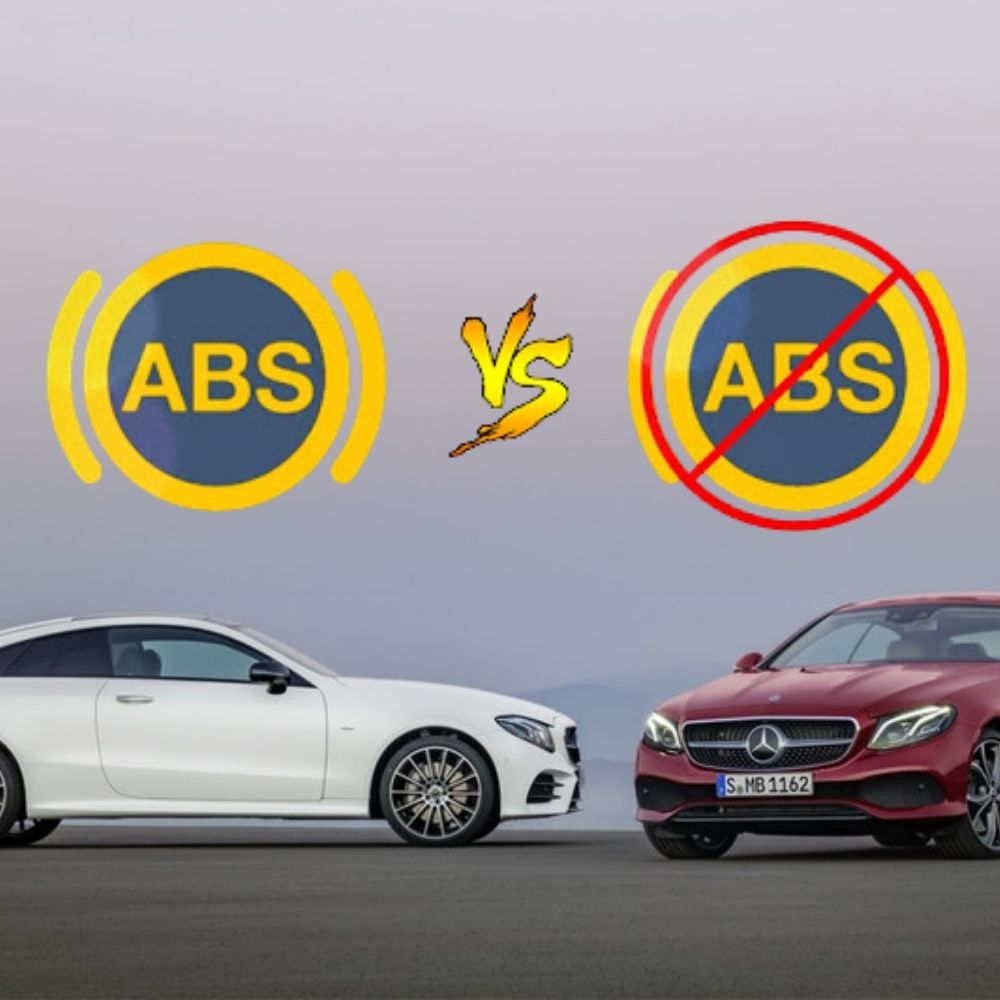
ABS vs Non ABS: What’s the Difference?
Contents
- What Are ABS and Non-ABS Braking Systems?
- ABS Braking System (Anti-lock Braking System)
- Non-ABS Braking System
- ABS vs Non-ABS: What’s the Difference? (Detailed Comparison)
- 1. Braking Distance
- 2. Steering Control While Braking
- 3. Stability and Skid Prevention
- 4. Performance on Different Road Surfaces
- 5. Driver Skill Requirements
- 6. Maintenance and Repair
- 7. Vehicle Applications
- Pros and Cons of ABS vs Non-ABS Braking
- Pros of ABS Brakes
- Cons of ABS Brakes
- Why Most Modern Cars Come With ABS?
- Enhanced Safety and Accident Reduction
- Regulatory Requirements
- Integration with Advanced Vehicle Systems
- Improved Performance Across Driving Conditions
- Consumer Expectation and Market Standard
- ABS Diagnostics, Repair, Retrofit and Coding Services at AutoExplain
The difference between ABS vs non-ABS brake plays a critical role in determining a vehicle’s stability and steering control during emergency braking situations. ABS brakes (Anti-lock Braking System) use wheel speed sensors, an ABS control module, and a hydraulic modulator to prevent wheel lock-up, maintain traction, and allow the driver to steer while braking hard. In contrast, non-ABS brakes rely entirely on mechanical braking force and driver input, making them more prone to wheel lock-up, skidding, and loss of directional control—especially on slippery surfaces or during panic braking. Understanding how ABS brakes vs non-ABS brakes operate, along with their strengths and limitations, is essential for evaluating real-world braking performance and choosing the right system for modern vehicles, particularly European luxury models.
Join AutoExplain as we explore the detailed differences between ABS vs non-ABS braking systems.
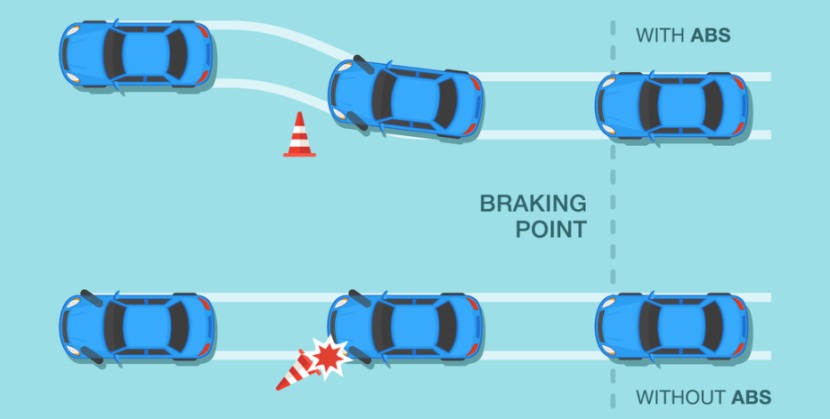
What Are ABS and Non-ABS Braking Systems?
ABS (Anti-lock Braking System) and non-ABS braking systems represent two different approaches to vehicle deceleration and control.
ABS Braking System (Anti-lock Braking System)
ABS is an electronically controlled braking technology designed to prevent wheel lock-up during hard or emergency braking. It uses a combination of wheel speed sensors, an ABS ECU (Electronic Control Unit), and a hydraulic modulator to monitor each wheel’s rotational speed in real time. When the system detects a wheel beginning to lock, it rapidly reduces and re-applies brake pressure—often multiple times per second—to maintain traction and allow the driver to retain steering control.
This ensures better vehicle stability, shorter stopping distances in most conditions, and improved handling during panic braking.
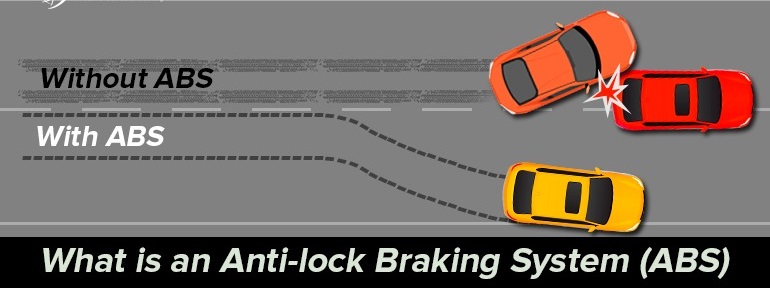
Read more: Anti-Lock Braking System (ABS) in Cars: What It Is and How It Works
Non-ABS Braking System
A non-ABS (traditional) braking system relies entirely on mechanical hydraulic pressure generated by the driver. When the brakes are applied forcefully—especially on wet or slippery surfaces—the wheels can lock up, causing the vehicle to skid and reducing the driver’s ability to steer.
In these systems, preventing wheel lock-up depends solely on the driver’s technique, typically using manual pumping or modulation of the brake pedal to regain traction. While non-ABS setups are mechanically simpler and easier to service, they offer significantly less stability and control during emergency situations.
ABS vs Non-ABS: What’s the Difference? (Detailed Comparison)
The difference between ABS vs non-ABS braking systems becomes most apparent during emergency braking, where traction, steering control, and vehicle stability are critical. Below is a detailed, technical comparison of both systems across the key performance categories.
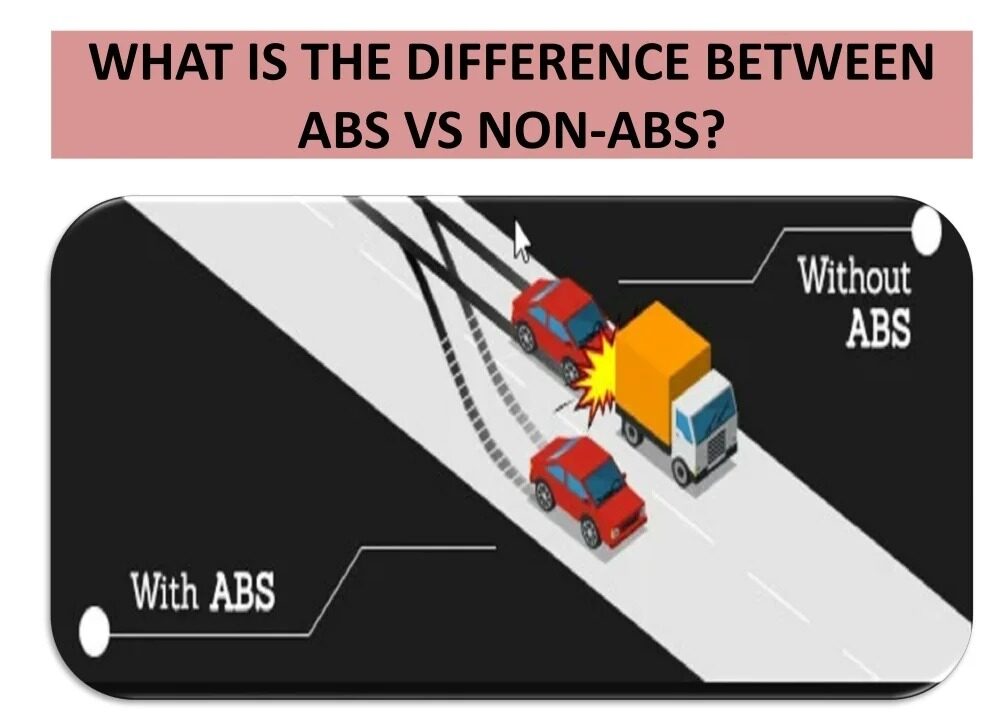
1. Braking Distance
ABS Braking
ABS prevents wheel lock-up, helping maintain traction and reducing braking distance on most surfaces such as dry asphalt, wet pavement, and icy roads. By modulating brake pressure multiple times per second, ABS ensures that each wheel slows down at the maximum possible rate without skidding.
Non-ABS Braking
Non-ABS systems can cause wheel lock-up during hard braking, especially on slippery surfaces. A locked wheel reduces the tire’s contact grip, often increasing stopping distance and causing the vehicle to slide uncontrollably.
Overall: ABS generally provides shorter and more consistent stopping distances across a wider range of road conditions.
2. Steering Control While Braking
ABS Braking
ABS maintains wheel rotation, allowing the driver to steer around obstacles even under full braking force. This is one of the most significant safety advantages of the system.
Non-ABS Braking
Once the wheels lock, the driver loses steering capability. The car continues in a straight line, regardless of steering input—dramatically reducing collision avoidance capability.
Overall: ABS enables brake-and-steer capability, while non-ABS eliminates steering control under wheel lock.
3. Stability and Skid Prevention
ABS Braking
ABS actively prevents skidding by detecting traction loss and adjusting pressure instantly. This greatly improves stability on wet, icy, or uneven roads.
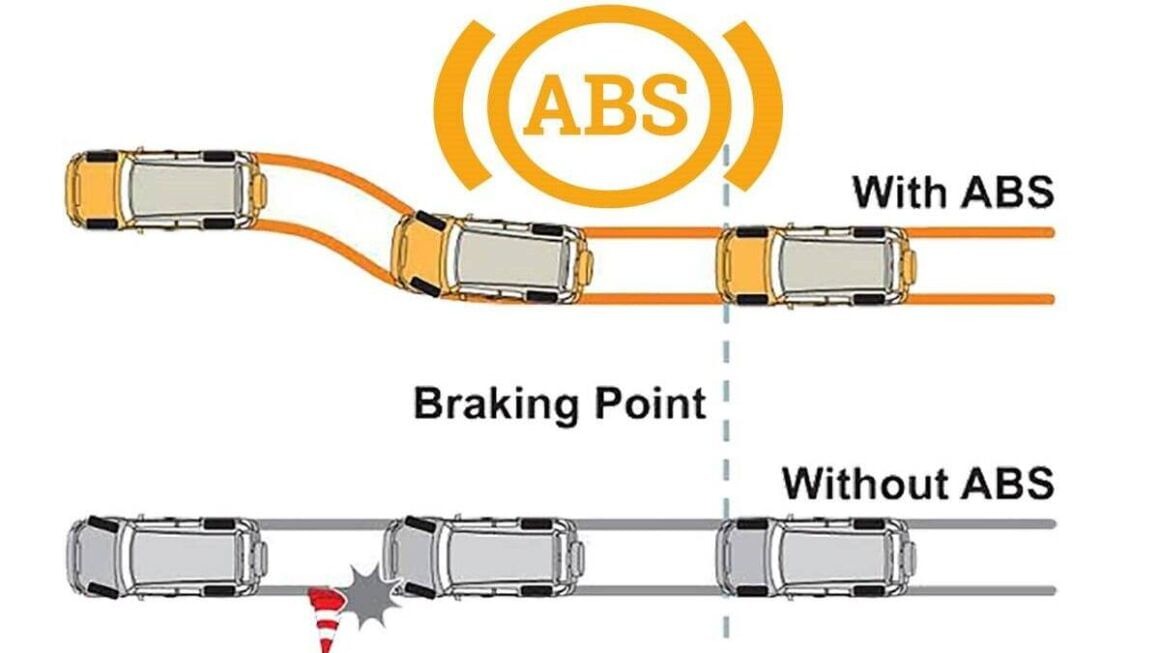
Non-ABS Braking
Non-ABS systems are more prone to skidding, fishtailing, or side-slipping during panic braking, particularly in low-traction environments such as rain, snow, or gravel.
Overall: ABS significantly enhances stability during emergency maneuvers.
4. Performance on Different Road Surfaces
ABS Braking
- Dry pavement: Shorter stopping distances, stable braking
- Wet roads: Maintains traction and control
- Icy/slippery surfaces: Helps prevent uncontrolled slides
- Gravel or loose surfaces: ABS may slightly increase stopping distances, but still provides superior directional control
Non-ABS Braking
- Performs predictably on dry roads
- Highly unstable on wet, icy, or sandy surfaces
- Wheel lock-up is more likely, compromising safety
Overall: ABS delivers more consistent performance across all surfaces.
5. Driver Skill Requirements
ABS Braking
- The system is fully automatic. Drivers simply:
- Press the brake pedal firmly
- Maintain pressure
- Allow ABS to modulate the brakes
Non-ABS Braking
Requires manual modulation:
- Pumping the brakes to prevent lock-up
- Adjusting pressure based on road feedback
- Requires experience, timing, and advanced driving skills
Overall: ABS reduces driver workload and increases emergency braking effectiveness.
6. Maintenance and Repair
ABS Braking
ABS involves electronics, sensors, and hydraulic control units.
Common service points include:
- Wheel speed sensors
- ABS hydraulic pump/modulator
- ABS ECU coding or calibration
- Repairs can be more complex and typically require OEM diagnostic tools.
Non-ABS Braking
Mechanically simpler, fewer components, lower repair costs. However, the safety trade-offs are significant.
Overall: ABS costs more to maintain but provides superior safety and vehicle control.
7. Vehicle Applications
ABS Braking
Standard on almost all modern passenger vehicles, including: Mercedes-Benz, BMW, Audi/VW (VAG), Volvo, Porsche
Non-ABS Braking
Found mainly on:
- Older generation cars
- Budget vehicles
- Certain motorcycles (entry-level)
- Off-road specialty vehicles
Overall: ABS is the global standard for modern automotive safety.
Pros and Cons of ABS vs Non-ABS Braking
Pros of ABS Brakes
- Prevents wheel lock-up during hard braking
- Maintains steering control under emergency stops
- Improves vehicle stability on wet, icy, or slippery roads
- Reduces panic braking risk and driver error
- Automatic modulation eliminates need for manual pumping

Cons of ABS Brakes
- Higher maintenance cost due to sensors and ABS module
- Complex diagnostics require specialized tools
- May slightly increase stopping distance on loose gravel or sand
Pros of Non-ABS Brakes
- Mechanically simple, fewer components to fail
- Lower repair and maintenance cost
- Performs predictably on dry, well-maintained roads
Cons of Non-ABS Brakes
- Prone to wheel lock-up, especially in panic braking
- Steering control lost during hard stops on slippery surfaces
- Requires skilled driver for effective emergency braking
- Higher accident risk in adverse conditions
Why Most Modern Cars Come With ABS?
Anti-lock Braking Systems (ABS) have become standard equipment on almost all modern vehicles, and there are several key reasons for this trend:
Enhanced Safety and Accident Reduction
Studies show that vehicles equipped with ABS are significantly less likely to be involved in collisions. ABS helps drivers maintain steering control during emergency braking, reducing the risk of skidding and improving overall vehicle stability.
Regulatory Requirements
Many countries, including the U.S. and European Union members, have mandated ABS as a standard safety feature for new passenger cars since the early 2010s. These regulations aim to reduce road accidents and protect occupants in emergency situations.
Integration with Advanced Vehicle Systems
Modern vehicles often combine ABS with other stability and traction technologies, such as:
- Electronic Stability Control (ESC)
- Traction Control Systems (TCS)
- Brake Assist Systems (BAS): ABS serves as the foundation for these systems, enabling more sophisticated safety interventions.
Improved Performance Across Driving Conditions
ABS delivers consistent braking performance on wet, icy, or uneven roads, making vehicles safer and easier to control under various weather and road conditions.
Consumer Expectation and Market Standard
Car buyers now expect ABS as part of a modern vehicle’s safety suite. It is considered a minimum standard feature for both family and luxury cars.
Overall: ABS is not just a convenience—it’s a critical safety technology that enhances control, reduces accidents, and forms the backbone of modern braking and vehicle stability systems.
ABS Diagnostics, Repair, Retrofit and Coding Services at AutoExplain
Modern ABS systems are complex, combining sensors, ECUs, and hydraulic modules. When issues arise—such as ABS warning lights, wheel lock errors, or loss of braking control—professional diagnostics are essential to ensure safety.
At AutoExplain, we provide comprehensive ABS solutions, including:
- Remote diagnostics to identify faults in real time
- Module repair and replacement for Mercedes, BMW, VAG, and other European cars
- Coding and programming of ABS/ESP modules after replacement
- Sensor calibration and adaptation to restore full system functionality…
With expert ABS support, drivers regain optimal braking performance, vehicle stability, and peace of mind, ensuring safety under all driving conditions.
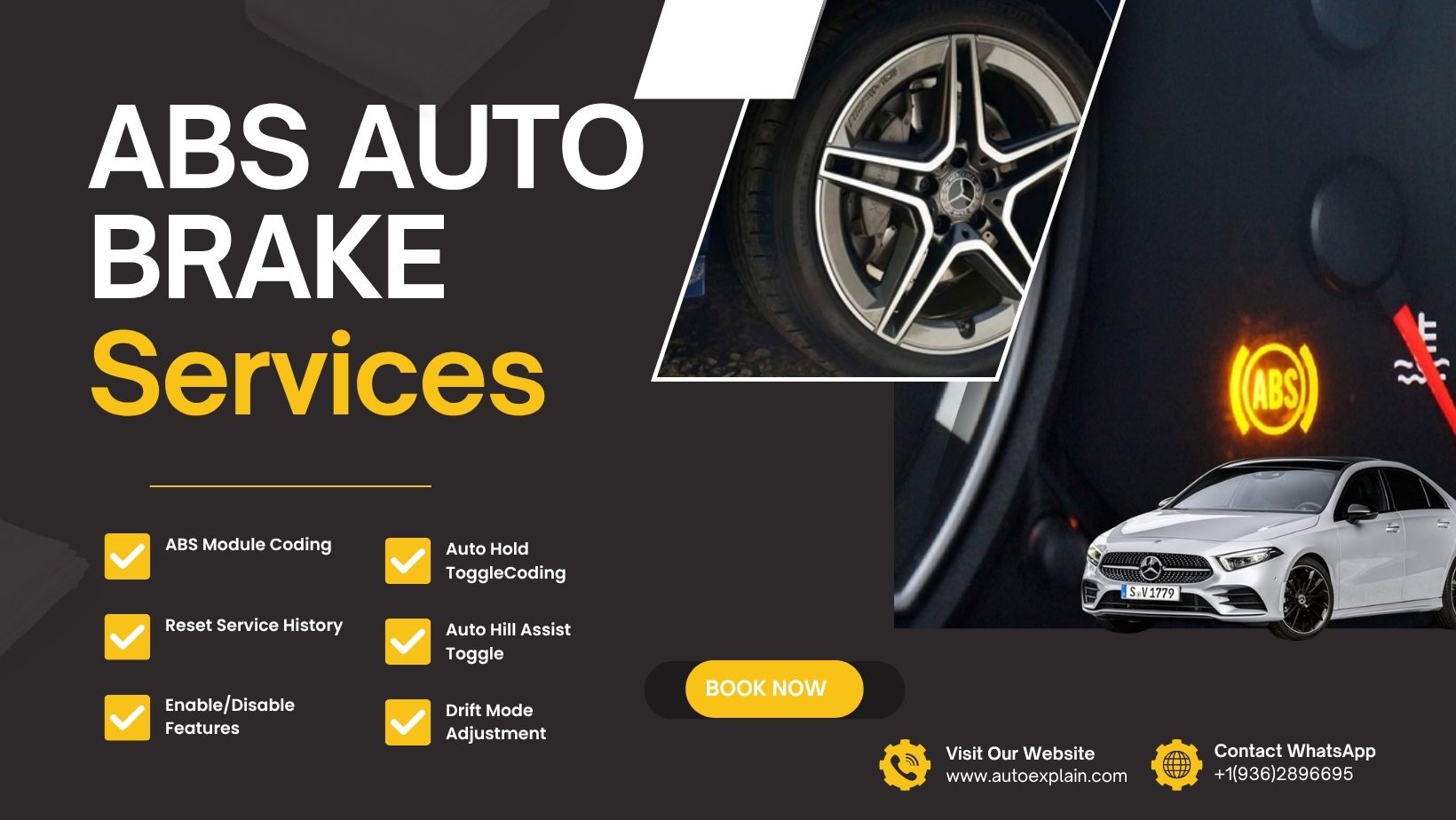
Contact our experts directly on WhatsApp: +1(936)2896695 for remote diagnostics, coding, and repair services for Mercedes, BMW, VAG, and other European vehicles: Chat with us on WhatsApp
Understanding the difference between ABS vs non-ABS braking systems is essential for both driver safety and vehicle performance. ABS brakes provide superior control, stability, and traction under emergency braking, allowing drivers to steer while stopping and reducing the risk of wheel lock-up. Non-ABS brakes, while mechanically simpler and easier to maintain, rely entirely on driver skill and are more prone to skidding and loss of control in adverse conditions.
Modern vehicles, particularly European models like Mercedes, BMW, and VAG, come equipped with ABS as a standard feature due to its proven safety benefits. Regular diagnostics, repair, and module coding ensure that your ABS system functions optimally, maintaining maximum braking performance.
For professional ABS support, including remote diagnostics, coding, and repair for European vehicles, contact AutoExplain directly via WhatsApp: +1(936)2896695.
If you want to learn ABS in detail, at AutoExplain we offer a comprehensive training course covering ABS systems, coding, diagnostics, and advanced features. See detail at: Automotive Training Online


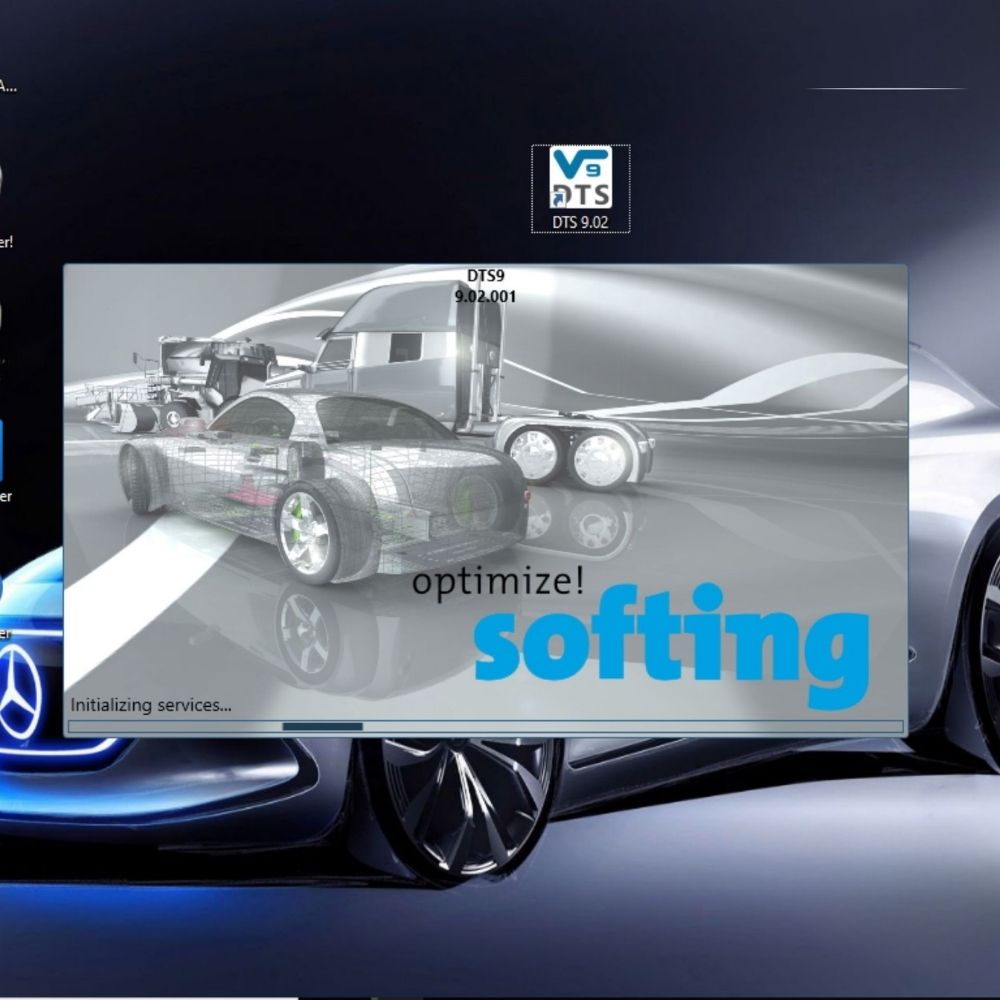
What is DTS Monaco? Key Functions of DTS Monaco Software

What is the Xentry Certificate Zenzefi? Why You Need It, and When It Is Required?

Master VAG Coding vs VAG Expertise: Which Training Book Is Better?



New Mercedes Car Coding Solution with ZenZefi certificate for DTS Monaco 9.02





